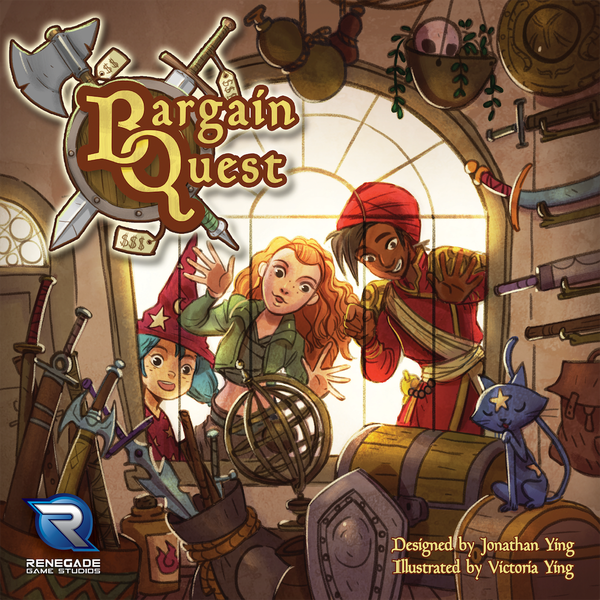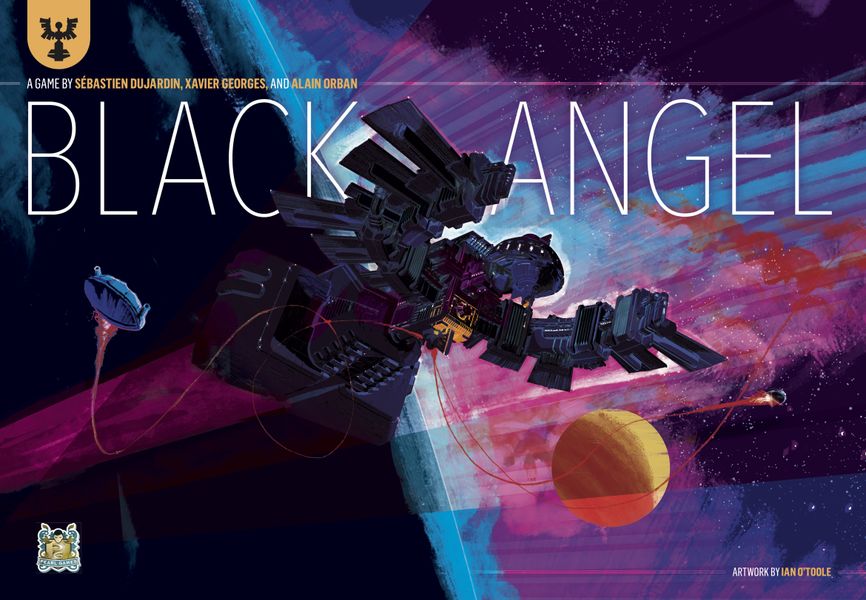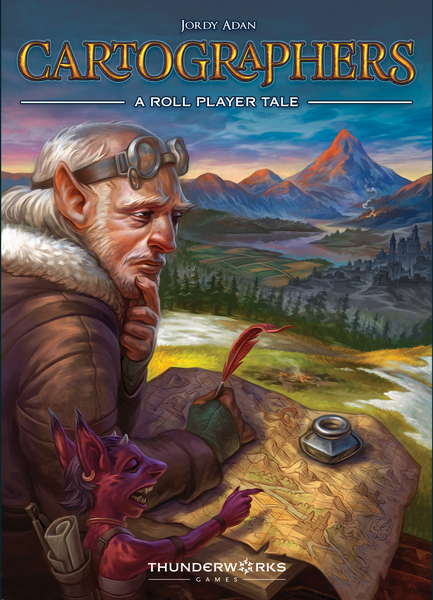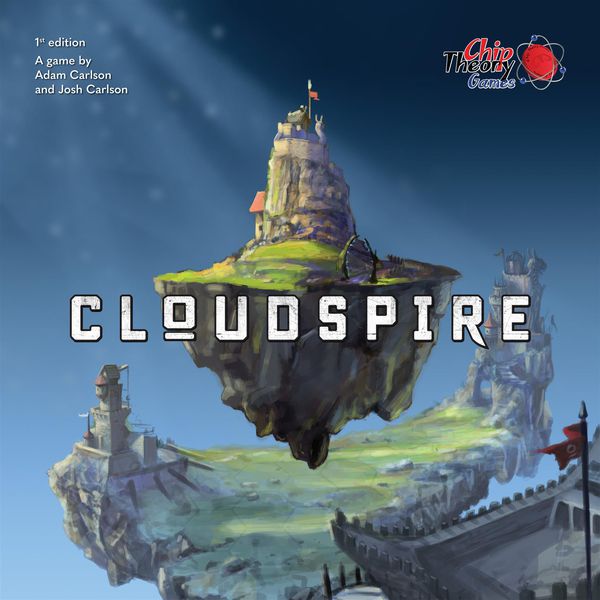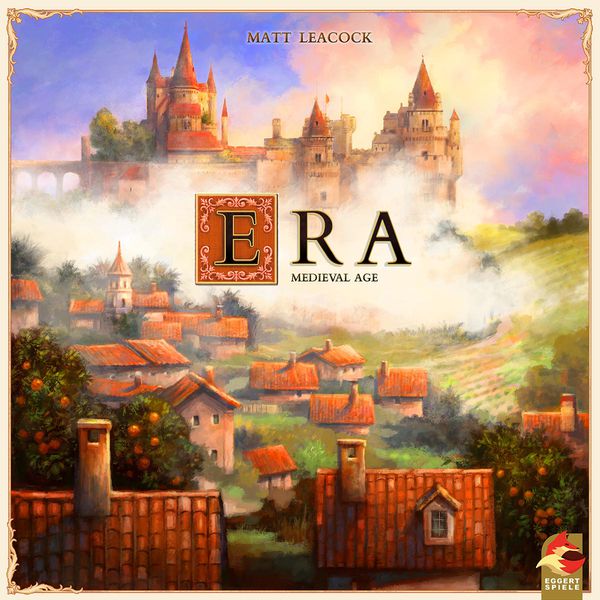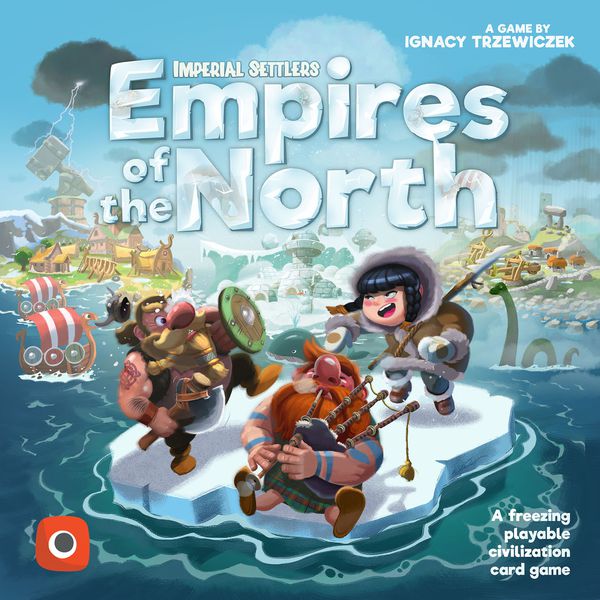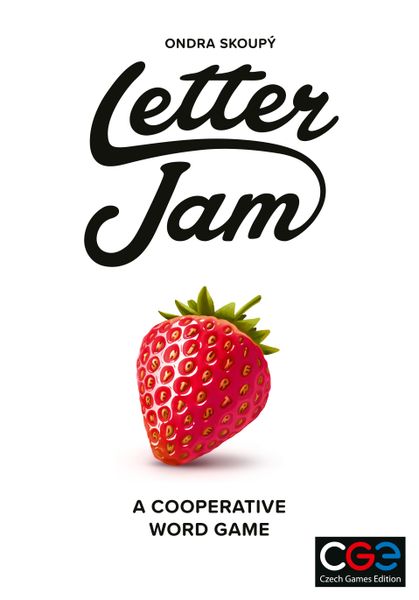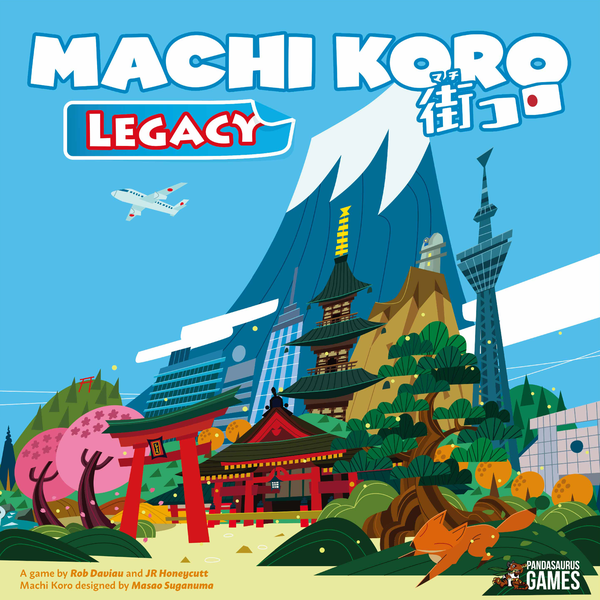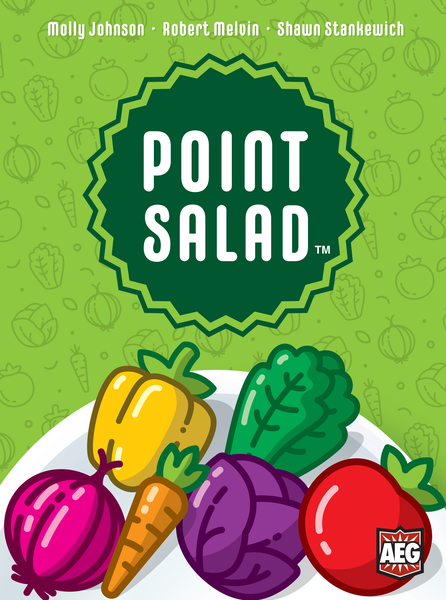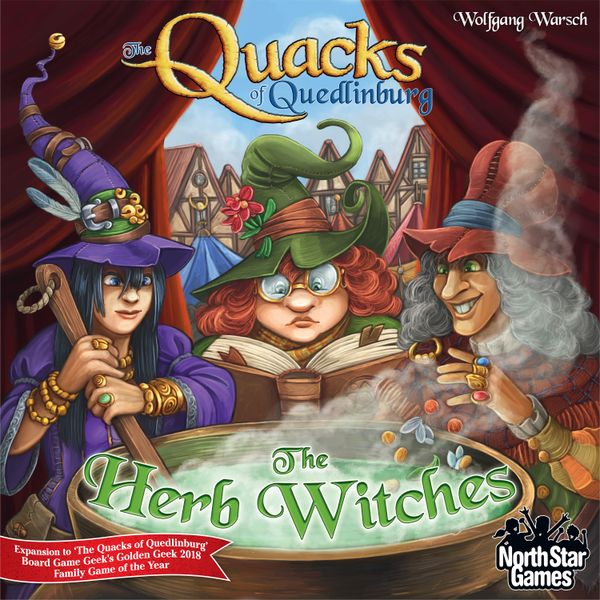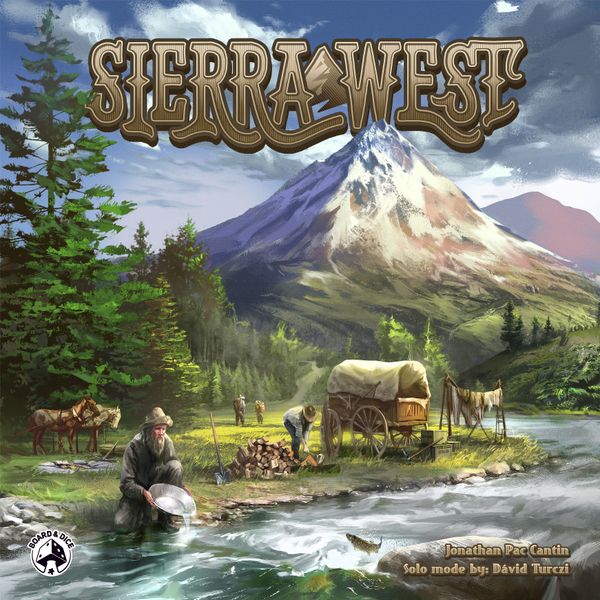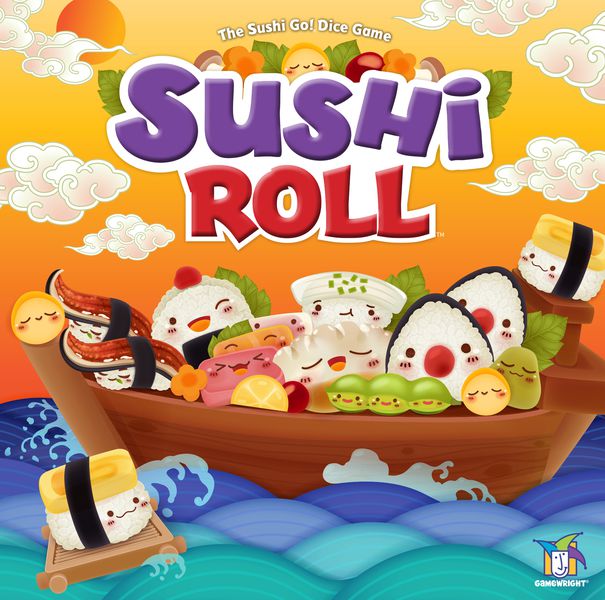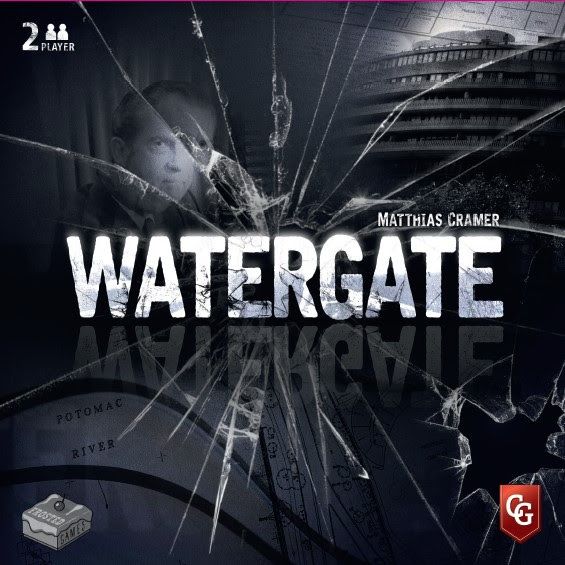For those who have never attended a mammoth sized board game convention such as Gen Con, one thing to realize when deciding whether or not you want to partake for the first time is precisely that: it is an expo. For all of the cardboard cavorting with panels, events, meetups, and general socializing amongst like-minded folk – all of which are exciting and fun! – at its core Gen Con is largely about selling you things.
With thousands of new games released each year (several hundred debuting at Gen Con alone), publishers are acutely aware that you only have so much time in your day and money in your wallet. It’s hard to get the word out about every single new title these days, and that challenge has been getting harder with each successive year. Events like Gen Con are an opportunity for companies large and small to grab your attention to that end, however briefly. After all, while the board game industry is generally laid-back (occasionally to a fault), it is still a business. Crowdfunding sites such as Kickstarter have fundamentally shifted how many designers and consumers think about and interact with the industry, but through it all, the desire from most publishing a game is still to use the traditional retail distribution model in the end. And those efforts aren’t free. If you want to see more of your favorite artists and designers making games, they need to either get their games signed or go through the gauntlet that is running a crowdfunding campaign. To get those games developed, manufactured, and shipped requires money. And to get money, they need to sell you games. It’s all very cyclical.
When you put that many people trying to do the same thing in the same room, the result is nothing if not electric. The level of new product on the Gen Con expo floor, and the collective energy of demoers and patrons alike is enough to make even the most introverted amongst us excited to be there. There is nothing else like it on this side of the Atlantic. You want to partake in as much of the exuberance as possible. Step into our booth! Demo our game! Let me show you what’s for sale! When you multiply that enthusiasm across the entire hall, it’s hard not to get swept up in it all. Which is precisely what publishers want. After all, impulsiveness plus captivated audience equals sales.
To ensure that you’re spending your precious moments looking at their stuff, publishers try to drum up as much fanfare for their games as possible. Sometimes this can happen organically via word of mouth and positive experiences while at the con, generating surprise hits (we’ll be coming back to those in Part 3). Often, however, many publishers start the marketing campaigns for their games weeks or even months in advance via social media, newsletters, influence peddling, showing off demos at other conventions, and so on. Doing this drives up a game’s hype.
And boy howdy does Gen Con thrive on hype.
Sometimes these games live up to the level of fervor that has been generated for it, and sometimes they don’t. In Part 2 of our Gen Con 2019 Recap: Deluxe Edition, today we take a brief look at 15 of some of the most hyped games leading up to Gen Con and how their reception fared by the end of the convention.
Also See:
- Part 1 – Active Kickstarters
- Part 2 – The New Hotness
- Part 3 – The Surprise Hits
- Part 4 – News & Announcements
- Part 5 – What Comes Next
The New Hotness
Bargain Quest
Publisher: Renegade Game Studios | Players: 2-6 | Play Time: 30-60 Minutes
Of all the titles on this list, Bargain Quest may be the most surprising non-surprise. The game was generating a fair amount of buzz prior to the convention, with many people wanting to get a look at the second edition of this originally self-Kickstarted game (later picked up by Renegade) and its wonderfully inverted take on the standard adventuring game trope. In this lightweight title there are indeed a handful of dangerous monsters seeking to do ill will upon your humble town and a band of hearty adventurers at the ready to stop them. The catch is…you’re not the adventurers. Instead, you are shopkeepers looking to sell items to aid said heroes and put a few dozen coins in your coffers for doing so.
Between the theme, artwork, and family-weight nature of the game, Bargain Quest was our December 2017 Indie Spotlight for good reason. Interest in it has only accelerated since its signing and subsequent expansion. This was well evidenced by the fact that despite Renegade releasing a bunch of new titles at Gen Con, including Power Rangers, Terror Below, Artsee, and more, Bargain Quest was one of the few to sell out. Luckily the wait won’t be much longer: the new edition is going out to Kickstarter backers now and will see wider release shortly thereafter.
Black Angel
Publisher: Pearl Games / Asmodee | Players: 1-4 | Play Time: 60-120 Minutes
As a general rule, we try particularly hard to stay atop the ever-growing litany of games shown off each year, but these days no matter how meticulous you are, we’ve reached a point in the industry where even the most ardent gamer simply can’t keep up. You are going to miss things. For us, Black Angel is one of those things. We fully admit, although Pearl Games had made a small announcement about the game as far back as mid 2017, we had no foreknowledge about its release, let alone its premise. And yet while there was no real marquee game of Gen Con 2019, this one came the closest. Talk about it was ample leading up to the con and it was much sought after from day one.
Whether that’s due to the fact that people really bought into the idea of a space-faring dice placement game about competing AI on a colony ship, that gamers will buy anything drawn by current in-demand illustrator Ian O’Toole right now, or that folks really wanted to see what the trio of designers behind Troyes had in store for us is hard to say. Perhaps all three. What was evident, though, was that Asmodee ran out of the initial allotment of Black Angel on Thursday before making an unexpected restock on Friday…which may have lasted all of another 24 hours. So demand was certainly there, even if we missed the boarding notice for it until mere days before the convention. Fear not though galactic travelers, Black Angel is due to land at the end of August.
Cartographers: A Roll Player Tale
Publisher: Thunderworks Games | Players: 1-100 | Play Time: 30-45 Minutes
Come now – you didn’t think we’d get through this list without at least one of the 518 roll & write games of 2019 did you?
Technically speaking Cartographers, the third Thunderworks title set in the Roll Player universe is a ‘flip and write’ game (similar to Kokoro and Welcome To) rather than a true roll & write title replete with dice, but for most people all such titles fall under the same general umbrella thanks to being low-stakes, laid-back games that can be played quickly, can support loads of players, and whose primary appeal involves you being able to write on your own board. Cartographers achieves this handily, drawing laudable comparisons to the much beloved Welcome To but with a fantasy adventure theme and a single deck of cards that doubles as the round timer.
Although Gen Con 2019 saw close to a dozen roll & write titles hit the market, Cartographers was by far the most popular, partly due to the level of pre-con enthusiasm generated and partly due to the fact that it strikes the right balance between familiar and inventive. As a result, thanks to this and their other new title, Lockdown, the small Thunderworks booth was mobbed early and frequently until Cartographers inevitably sold out part way through the convention. Yet for those like us who missed out, we won’t have to wait long, as this adventure should be available in just a few weeks.
Cloudspire
Publisher: Chip Theory Games | Players: 1-4 | Play Time: 90-180 Minutes
I will confess that of all 15 of the New Hotness games listed here today, Cloudspire was probably the least familiar to me at first.
Published by Chip Theory Games of Too Many Bones fame, Cloudspire was the end result of yet another massively successful Kickstarter campaign and already had a fair amount of attention going into Gen Con as a result. Boasting all of the high end components, deep replayability, and expansive gameplay style options that their brand has become known for, Cloudspire proved a continuation of this trend, exemplified by a continually hopping booth looking to see the finished product. It was also selling surprisingly fast for a game north of a $125 price point, finally depleting themselves midday Saturday. The main shipment is due in sometime in September with most of the add-ons in tow.
The mammoth-sized Cloudspire is a MOBA-style tower defense game – one of at least a dozen such games to crop over the last year or two – in which players are different factions trying to outlive and outlast one another on a hotly contested sky island. As expected in a tower defense game, players focus their turns on shoring up their own defenses while simultaneously trying to hinder their opponents, all before a wave of largely AI-driven monsters are deployed to the board to unleash their fury. With so much variability and general heft to it, not to mention the company’s track record, it’s pretty easy in retrospect to see why the hype was there for this one.
Era: Medieval Age
Publisher: eggertspiele | Players: 1-4 | Play Time: 45-60 Minutes
There is some truth to the old axiom that what’s old is new again. Because that’s kind of what we’re getting in the whole roll & write bubble that we’re currently in. For all the games out there trying new variations on the idea, the genre itself isn’t exactly new. At a minimum the notion of rolling dice and notching off fields of a player pad is 15 years old, and if we’re all being honest, it all was birthed out of the great progenitor Yahtzee, which is now some six decades old.
Era: the Medieval Age doesn’t go quite that far back to re-implement itself, but it is very much billed as the spiritual successor to designer Matt Leacock’s original (and well-received) dice-based civ-building 2008 game Roll Through the Ages. In RTTA players rolled dice to gain resources and used them to construct buildings of their empire, all of which was denoted abstractly on pegboard. Era uses that same concept but takes it to 11 with you adding high quality 3D building pieces to an indented grid. The whole thing is very impressive to behold but remains fairly simple to play, giving some big box production value while staying very much at the family weight complexity these games aim to be. It’s also advertised as being the first in a whole new series of roll & build games to come.
Plan B had sufficient copies of this angular empire game on hand, lasting at least into Sunday morning, and though some had concerns about the not-so-cheap price point for a 45-60 minute game, demand for it was pretty constant. We shall see about the broader community when the full allotment arrives within the next 2-6 weeks.
Funkoverse Strategy Game
Publisher: Funko Games | Players: 2-4 | Play Time: 20-60 Minutes
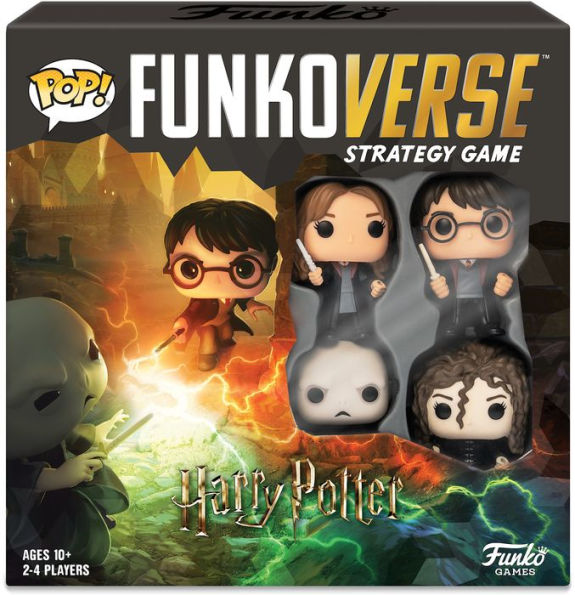 When Funko – the company primarily known for their seemingly endless catalog of pop culture figurines – announced that they were going to be releasing a board game utilizing their FunkoPop characters, there was a lot of speculation by the hobby crowd as to its merit. A LOT of speculation. And a lot of assumptions.
When Funko – the company primarily known for their seemingly endless catalog of pop culture figurines – announced that they were going to be releasing a board game utilizing their FunkoPop characters, there was a lot of speculation by the hobby crowd as to its merit. A LOT of speculation. And a lot of assumptions.
Assumptions that, to the surprise of many, turned out to be unfounded.
Since purchasing Forrest-Pruzan Creative this spring, Funko has made a concerted effort to get into the board game sphere, and their first original venture was led by a team that included three longstanding hobby gamers. The result was the Funkoverse Strategy Game, and it’s…actually pretty fun. People were pretty skeptical going into Gen Con, but by the end, it was one of the most talked about games there.
Setting the FunkoPop characters aside, the Funkoverse game is a straightforward scenario-based tactical fighting game, where you can play in duels or on teams of two. Each character in the game comes with their own special powers to use to move and fight, and the game uses a basic but effective cooldown track to monitor when those powers can be used again in battle.
And of course, tapping into its broad scope appeal, there is the game’s endless potential for crossovers and mashups between different characters.
The initial wave of Funko options will include characters from Harry Potter, Batman, Rick & Morty, and amazingly, the Golden Girls. All of which should be hitting October 1st.
We’re not saying we’re totally having Rose face Voldemort. But we’re totally having Rose face Voldemort.
Imperial Settlers: Empires of the North
Publisher: Portal Games | Players: 1-4 | Play Time: 45-90 Minutes
If you handed me a list of all the games at Gen Con 2019 and asked me to guess what some of the hottest games of the con would be based on zero research, one of the titles I’d have easily put on the list would be Imperial Settlers: Empires of the North. It had that kind of attention bestowed upon it months ago and it hasn’t really abated yet.
Not one of the myriad Imperial Settlers expansions insomuch as an entirely new standalone game, Empires still bears most of the hallmark traits that Imperial Settlers fans enjoy. In this setting, however, the focus is less on maximizing your points over five rounds so much as an engine-building race to 25VP. This shift in goals, in tandem with a series of brand new thematic factions and a slightly streamlined ruleset should make gameplay glide along ever so smoother for new players compared to its sibling while still offering something different for fans of the original Settlers.
Not wanting to worry about shortages to that end, Portal had an extensive number of copies on hand in their booth, with demos running all weekend long. So much so, in fact, that it was one of just a couple titles on this list that didn’t run out. Even still, if you weren’t able to chill out at the Portal booth to pick up a copy, Empires of the North is expected widespread release this week.
Letter Jam
Publisher: Czech Games Edition | Players: 2-6 | Play Time: 30-60 Minutes
Two things are always true about word games. First, it’s incredibly difficult to generate widespread appeal. Second, even if people are receptive to them, it’s impossible to predict which word games will resonate with audiences and which ones won’t. A couple years back, CGE released a word game that took the gaming world (and themselves) by surprise with the megahit Codenames. In 2019, they are back with an all new word game called Letter Jam.
Letter Jam had been quietly picking up steam during the first half of the year, with demos shown at a couple conventions leading up to Gen Con, including Origins. That early positive reception clearly bolstered its pre-con press. Despite bringing quite a few copies, they did end up running out of copies. Is Letter Jam going to have that same lightning in a bottle effect as Codenames? No, probably not. But that’s also quite alright, as despite sharing similarities of being cooperative and word-based, they are very different games.
In effect, Letter Jam is sort of a co-op based word jumble game. At the onset everyone is given a word via a handful of face-down cards. However, like Hanani and similar games, you cannot see your own cards. Everyone begins by revealing their first letter and then people must collectively use the revealed letters to create a word clue such that it may help as many deduce what letter they have as possible. If you think you have it, you move to the next letter. Yet with only so many rounds, time is precious. When the game ends, everyone must arrange what they think their letters are into a word for a final reveal.
The whole experience is incredibly clever, occasionally frustrating, and focuses as much on deductive reasoning as wordplay. It’s not as high energy as Codenames, but if you like word games it’s definitely worth trying all the same when it debuts in mid October.
Machi Koro Legacy
Publisher: Pandasaurus Games | Players: 2-4 | Play Time: 30-45 Minutes
Though there were a couple legacy games on hand at Gen Con 2019, as we remarked in our preview article, Machi Koro Legacy was not only the legacy game of most attention at the con, it was also the main focus at the Pandasaurus booth most of the weekend. Thanks to the publisher pedigree and general fandon of Machi Koro in general, the legacy version was expected to be a popular game well before the convention ever rolled into Indianapolis. And in that, Machi Koro Legacy did not disappoint. Interest in the game was steady and strong, with many wanting to try their hand at taking MK to the next level.
Borrowing from the similar blueprint of Pandemic Legacy, the core of Machi Koro Legacy operates within the same framework as the original game. You’re still rolling dice, getting money, and using those results to erect specific buildings. Over the span of 10 games, however, things will expand, change, and generally diverge from there in typical legacy fashion. And once completed your campaign is complete the game remains fully replayable. If you didn’t get your chance to grab a copy at the convention (and based on the foot traffic surely everyone didn’t), release on the game was pushed back ever so slightly and should be arriving in early September.
Point Salad
Publisher: Alderac Entertainment Group | Players: 2-6 | Play Time: 15-30 Minutes
I kind of love how this is one of the games that made the hotness list. And not because of the highly tongue-in-cheek name.
Ok, so it’s not only because of the highly tongue-in-cheek name.
When it comes to super popular games leading into conventions, most tend to have some large driving factor that’s attracting people to them, be it the publisher, artist, designer, mechanic, components, theme, etc. Which usually means games that have more physical substance to them are the ones enticing audiences. While many smaller footprint games sell well at a convention due to their portability and low price point, it can be difficult for pure card games to generate the same level of interest going in, especially to a convention like Gen Con. Somehow though, Point Salad made the buzz cut and stayed that way, as evidenced by the fact that people routinely were asking for it at the AEG booth leading up to its debut during their annual Big Games Night…and then promptly sold out the next day. Fear not though: a full veggie spread is due the first week in September.
A quick-playing card drafting game, Point Salad has you gathering different vegetable cards into your tableau, but the veggies score differently depending not only on how many of that kind you have but also whether or not you have other vegetables in your tableau as well. So although it’s super simple to teach, there’s slightly more to it than simply grabbing 25,000 carrots because you can. Ergo, it’s a vegetable game about generating points in different ways. With a wonderfully meta name.
The Quacks of Quedlinburg: The Herb Witches
Publisher: North Star Games | Players: 2-5 | Play Time: 45 Minutes
For the most part, expansions don’t usually reach the same fever pitch of anticipation that a new title gets. Yet while there were several sought after expansions at this year’s Gen Con (i.e. Everdell, Teotihuacan, and Villainous), none had the same frenetic energy around them like The Quacks of Quedlinburg: The Herb Witches.
It was kind of nuts. Especially for what is effectively a push your luck game. Even a 2018 Kennerspiel (and Laurel) winner.
The main crux of The Herb Witches is that it adds support for a fifth player, new ingredient books, a brand new ingredient to contend with, and some additional scoring options via the witches themselves. All of these new features are certainly appreciable, and there was definitely significant chatter about the expansion prior to the con, but to reach the upper tiers of the Hotness hype while there? That was unexpected.
Much of this was likely due to a perfect magical con recipe of pre-con buzz, North Star only ended up with a fraction of their copies due to a shipping error, and the BGG Store debuting the plastic token upgrade kits, unduly elevating it up. You should see the fervor on this one die down a bit after the con when the main shipment arrives in the latter half of September.
Sierra West
Publisher: Board & Dice | Players: 1-4 | Play Time: 45-60 Minutes
Sierra West was another game we made specific mention to keep an eye on after attending Origins, as we felt that this modular-based card-driven game of pioneering had something to it worth checking out.
It would seem that many agreed with us, as despite Board & Dice bringing a decently sized allotment with them, the game sold out on Saturday. (The Teo expansion fared better, lasting till sometime Sunday).
In Sierra West, you are an 19th century pioneer leading an expedition through the unforgiving Sierra Nevada mountains and be the most adept at accomplishing the chosen module’s goals, such as dealing with bandits, mining resources, and so on. The main hook of the game is that each round you only get to perform two strings of actions on your turn, which is entirely driven by slotting various cards in your hands onto spaces on the board. These cards dictate not only which actions you take but their order as well, leading to a lot of interesting strategic decisions to make over the course of the game.
Unlike some of the other titles on the list, Sierra West’s pre-con fanfare was less zero to sixty and more of a slow burn that has been gradually building over a longer period. Which thematically works well for a game about navigating a mountain range. Interest was steady and abundant at the convention. However, whether it maintains that same pace of interest when it reaches wide release any day now remains to be seen.
Sushi Roll
Publisher: Gamewright | Players: 2-5 | Play Time: 20 Minutes
For the deliciously punny name alone, Sushi Roll is already a winner.
I generally don’t pay too much attention at first when an existing game is converted from one iteration into the next. However, I fully admit that changing the delivery method of a game can be a very positive thing for many, either because it makes it more accessible, shortens the time to play, or is simply more fun. The most common example of this is when a board game is made into a dice game. Or in the case of Sushi Go!, a card game is made into a dice game.
Sushi Go! Is a wonderfully approachable, 15 minute card drafting game about trying to collect sets of sushi to score points. Sushi Roll Is the exact same idea, except using dice. Instead of cards, players roll the dice in front of them, select a die to keep for scoring, and then pass their dice pool to the next player. The game does shake things up by adding ‘chopsticks’, allowing you to swap dice from one pool to another, so it’s not quite a rehash. Chopsticks inject a new degree of interactivity amongst players through mildly manipulating the dice to be more or less favorable. Moreover, Sushi Roll retains all of the things people enjoyed about the original, with its easy setup, simple gameplay, and quick pacing.
Sushi Roll was highly anticipated going into the convention and Gamewright came prepared with ample copies – making it one of the handful of titles on this list that didn’t sell out. And if you still missed your chance, this new dice version should be available any day now.
Unmatched: Battle of Legends
Publisher: Mondo Games / Restoration Games | Players: 2-4 | Play Time: 20-40 Minutes
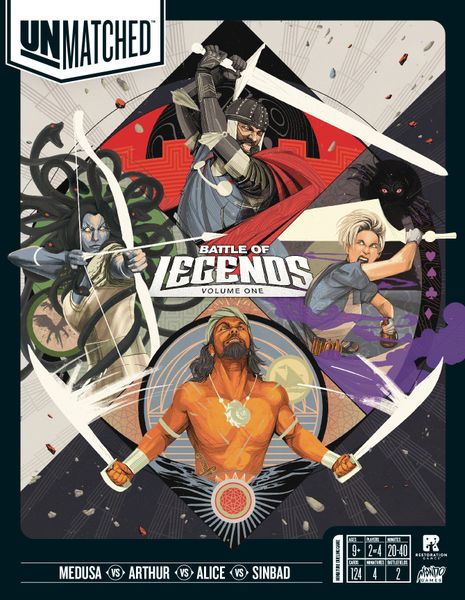 Licensed games are a minefield when it comes to making something that adequately represents the IP, is fun to play, and caters as much to mass market appeal as to hobby gamers. If done poorly, they’re dismissed. But done correctly, they can be a terrific representation of the subject material.
Licensed games are a minefield when it comes to making something that adequately represents the IP, is fun to play, and caters as much to mass market appeal as to hobby gamers. If done poorly, they’re dismissed. But done correctly, they can be a terrific representation of the subject material.
Of course, this is all predicated on getting and maintaining said license. Because the worst possible outcome is a good licensed game that you lose the license to, making it impossible to reprint later on in its original form. (Looking at you Queen’s Gambit.)
It does, however, set them up for a potential reboot later on. Which is exactly what happened with the new Unmatched, an arena-style fighting game co-published between Mondo Games and Restoration Games.
I’ve admittedly never played original Star Wars: Epic Duels, and based on the numerous people I’d talked to in the vicinity of both booths showcasing this new title, neither had a lot of others. Yet I know that it was originally well received, and with Daviau (one of the original designers) at the helm most assumed it was in good hands.
Given that Unmatched was on display in two different booths and sold out in both places despite daily rationing reflects that. Or it just reflects people are really into mashup style fighting games (Or both). In which case Unmatched had you covered by unveiling nine different factions across four different products. Have King Arthur fight Alice in Wonderland! Or Robin Hood fight Bigfoot! Have Bruce Lee take on some Raptors! With highly flavorful decks whose actions deftly reflect their characters, everyone seemed keen on wanting to get in on some offbeat dueling. Volume One is due out in September, with the Robin Hood/Bigfoot following in October. Bruce Lee, though, is not slated for a retail release.
Watergate
Publisher: Capstone Games | Players: 2 | Play Time: 30-60 Minutes
Watergate is one of those strange games that don’t seem like they would have widespread appeal at first glance, but since its European release in May and sneak preview at Origins, interest in the game had only continued to rise going into Gen Con. And stayed that way throughout the entire event at the Capstone booth.
As a general rule, most gamers are a little apprehensive about political games – or rather, games that involve real world politics. Doubly so if it’s US politics…unless it’s set during the Cold War.
It’s all a little weird to navigate.
Thankfully, all of that is oddly fitting in this case, because navigating around a sea of political detail is precisely what this two-player tense tug of war game is all about.
Set during the height of the Nixon Watergate scandal, being a series of illegal activities and the efforts to cover them up during the 1970s which inevitably forced Nixon to resign (45 years ago yesterday, in fact!). In this half hour(ish) game of intrigue and obfuscation, one player is Nixon who is trying to not resign during the course of the game, whereas the other represents the doggedly persistent The Washington Post, exposing his misdeeds all along the way. The game is entirely card driven (akin to Twilight Struggle or 13 Days), and though brief, playthroughs are often enjoyably tension-filled exercises of tactical decision-making as each side leverages their asymmetric powers to emerge victorious.
Watergate had a lot of investigative eyes prior to the con, and based on its reception there, that is unlike to abate anytime soon once it hits widely later this month.
That’s all for now! Check back for the next segment when we talk about games that didn’t have a ton of hype going in but made a splash all the same.
Photo Credits: Futurama by Comedy Central.


